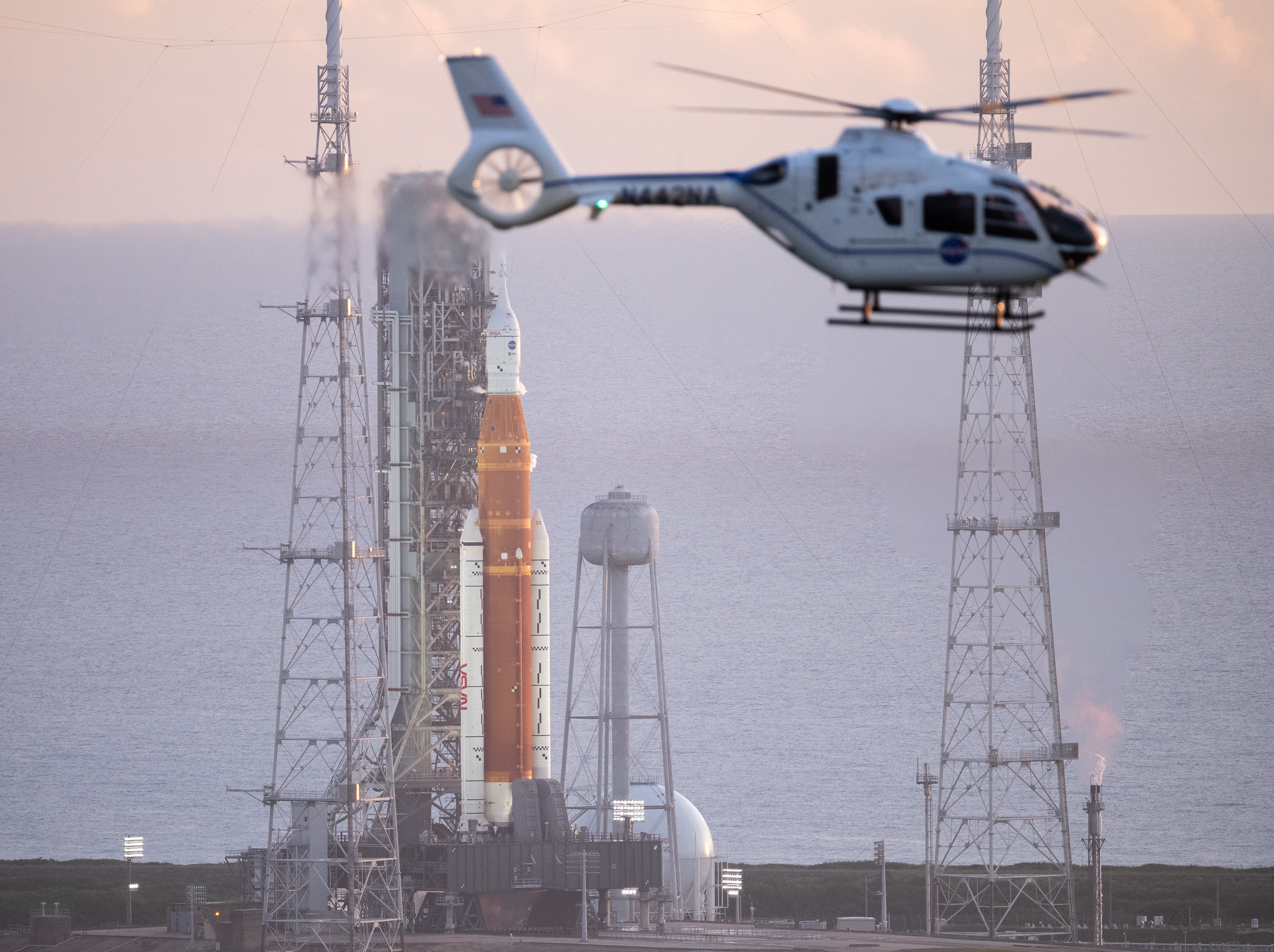The rocket was set to launch on Monday with three test dummies aboard on a flight to provide information for future missions that will see humans return to the Moon.
But NASA said the proper temperature range for one of the rocket’s engines could not be achieved in time for the two-hour launch window.
“Launch director Charlie Blackwell-Thompson has called a scrub of the attempt of the launch of Artemis 1,” the US space agency said.
“The issue that came up was an engine bleed which couldn’t be remedied but the rocket is currently in a stable configuration.”
The next earliest opportunity for a launch is Friday 2 September.
“Friday is definitely in play. We just need a little bit of time to look at the data, but the team is setting up for a 96-hour recycle,” said Mike Sarafin, Artemis mission manager, at a press conference.
“We’re going to play all nine innings. We’re not giving up yet.”
Data on the issue will continue to be analysed by engineers and the rocket will remain fuelled on the launchpad at the Kennedy Space Center.

The delay was described as just a “part of the space business” by NASA Administrator and US senator Bill Nelson.
He also said test flights are always pushed harder than when there was crew onboard.
“We don’t launch until it’s right … I think it’s just illustrative that this is a very complicated machine, a very complicated system and all those things have to work and you don’t want to light the candle until it’s ready to go,” he said.
The uncrewed flight will be crucial to assessing the capabilities of the Space Launch System (SLS) rocket and the six-person crew capsule for the planned return to the Moon.
That is scheduled for 2024 and will be the first time humans land on the Moon since Apollo 17 in December 1972, and also the first time a woman and a person of colour will land on its surface.
This is meant to pave the way for a long-term lunar presence and serve as “a steppingstone on the way to Mars”.






